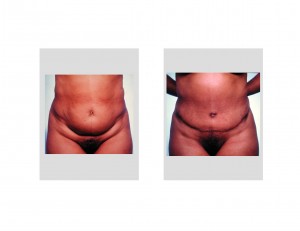A tummy tuck is a common procedure that is used after childbirthing in women and significant weight loss in both sexes. Aside from the bariatric surgery patient, the vast majority of tummy tucks are done in women. Tummy tucks have a certain number of variables in their execution from a mini- vs a full skin excision and theuse of liposuction from the abdomen out into various areas of the waistline and back.
Despite the many very successful results and happy patients that result from a tummy tuck procedure, infrequent complications can and do occur. Most of these result from either a misunderstandingof what the procedure can really do or an outcome that may require a revision to achieve the best aesthetic result.

Scar appearance and position are potential reasons for postoperative dissatisfaction. While many patients are concerned about undesired scar widening and thickening, it is actually very uncommon and is more of a risk in patients with intermediate skin pigmentation. (e.g., Asians, Hispanics) Almost invariably these ethnicities develop hyperpigmentation of the scar which is slow to fade if it ever does. African- Americans, despite more skin pigmentation, do not have this same concern and I have never seen a single case of keloid scar formation. Regardless of ethnicity, the most common scar problem is that of a dogear, a bunching of skin and fat on the side ends of the tummy tuck incisions. These can usually be resolved by a small excision of the dogear done under local anesthesia.
The too highly positioned scar is a more difficult revisional challenge. Patients need to understand that full tummy tuck scars will almost always end up higher than a mini-tummy tuck scar. That is what happens when more skin is removed and there is a greater ‘pull-up’ of the pubic skin and hairline. While it could have occurred from the way the tummy tuck was marked out before surgery, it is more likely the result of how much skin was removed. The price of the flattest stomach and no residual loose skin may be a higher scar. If too high, it is very difficult to move it lower more than an inch or so. This may or may not make a revisional procedure worth it.

Dr. Barry Eppley
Indianapolis, Indiana


